A Pilates instructor says you’ll improve how you move if you practice these two types of stretches
The best mobility routines include static and dynamic stretching—here’s a routine that features both

We all know stretching is good for us—that’s why it feels so good—but did you know that there are two types of stretch that have different benefits?
Static stretching involves holding a stretch and lengthening a muscle for an extended period of time, while dynamic stretching uses controlled and active movement to increase mobility.
I spoke to Jill Drummond, a NASM-certified Personal Trainer and experienced Pilates instructor for BODYBAR Pilates to understand the differences, and Drummond shared a routine that combines both types to help you develop your overall mobility.
What is a static stretch?
“Static stretching is what most people envision when they think of stretching—it involves holding a position for 30 to 60 seconds to target a specific muscle,” says Drummond.
“This type of stretching helps elongate muscles, increase range of motion and alleviate stiffness and soreness.”
Static stretches are also great for increased blood flow, reduced muscle tension and stress, and enhanced relaxation and recovery.
What is a dynamic stretch?
“Dynamic stretching, a fundamental component of Pilates, involves controlled, active movements that take joints and muscles through their full range of motion,” says Drummond.
“These movements mimic real-life activities, helping to improve mobility and overall joint function.”
Dynamic stretching contributes to improved blood circulation, reduced stiffness in muscles and joints, enhanced flexibility and mobility, better performance in daily activities and workouts and injury prevention.
For the best results, you should combine both static and dynamic stretches in your routine. This balanced approach promotes flexibility, mobility, and overall functional movement.
15-minute stretching routine
Drummond says that committing to just 15-20 minutes of mobility-focused movement each day can improve your flexibility, mobility and overall movement quality.
However, she advises that if you’re just beginning your mobility journey, you should start with three stretching sessions a week, as you may experience some soreness as your body adapts. Gradually increase to five to seven sessions a week.
1. Bridge

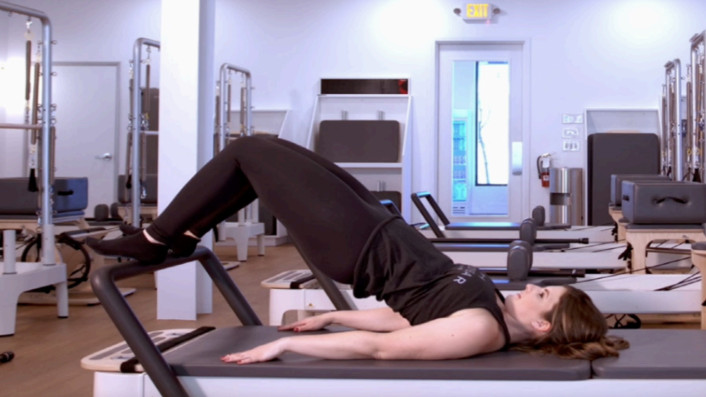
Time: 60sec
What it does: This dynamic Pilates movement warms the hips, glutes and spine.
Start your week with achievable workout ideas, health tips and wellbeing advice in your inbox.
How to do it:
- Lie on your back, with your knees bent and feet flat on the floor (or elevated as in the image).
- Engage your core and glutes, and press through your heels to lift your hips, creating a straight line through the shoulders, hips and knees.
- Lower your hips slowly, rolling your back down vertebrae by vertebrae to return to the starting position.
- Continue for time, moving slowly.
2. Dynamic thigh stretch
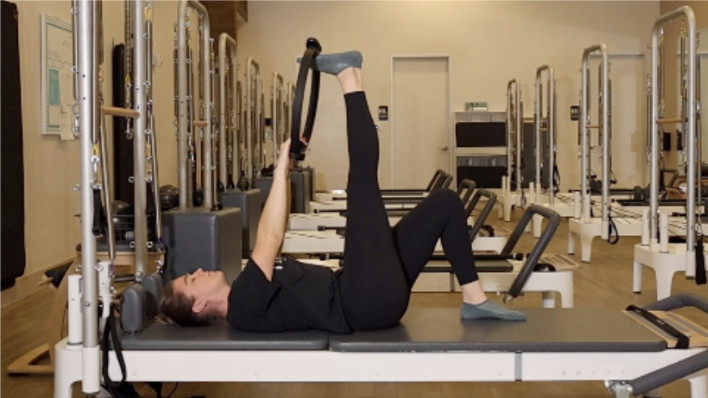
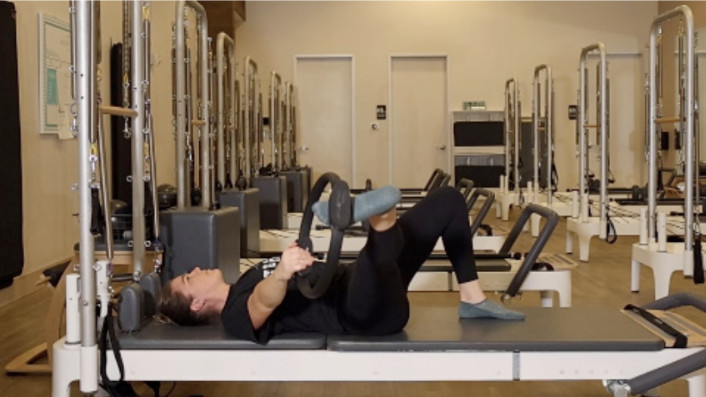

Time: 60sec each side
What it does: This is a functional movement which lengthens the hamstring, inner thigh and IT band—when they’re tight, they can cause hip and knee pain.
How to do it:
- Lie on your back and place one foot in a Pilates ring, mini resistance band or looped towel.
- Extend your leg and raise it.
- Gently reach the extended leg wide to stretch the inner thigh, keeping your hips and shoulders on the mat.
- Pause, then move the leg across your body to stretch the outer thigh.
- Continue to move the leg back and forth, pausing in each position, making sure your hips and shoulders don’t lift off the mat.
- Repeat on the other leg.
3. Saw
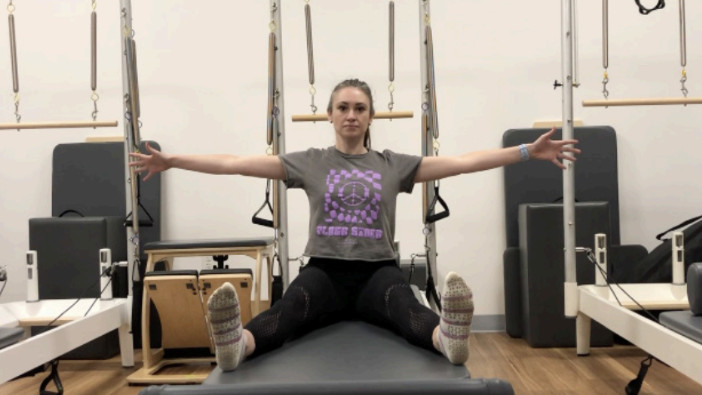
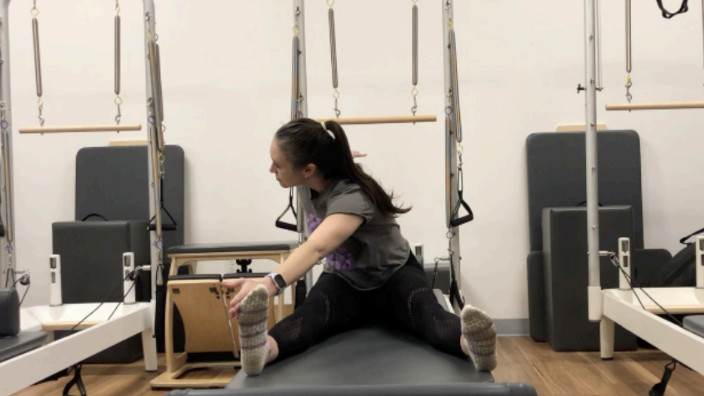
Time: 60sec
What it does: A classic Pilates move that improves rotation through the upper body and lengthens the lower body.
How to do it:
- Sit with your legs extended slightly wider than hip-width, feet flexed and arms extended out to the sides.
- Keeping your hips grounded throughout, rotate your torso to the right, reaching your right hand toward your left toes.
- Return to center, then repeat on the other side.
- Exhale as you rotate and inhale and as you return to the start.
4. Figure 4
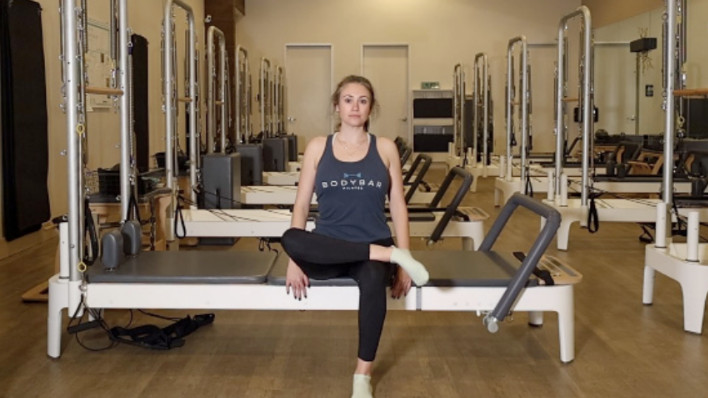
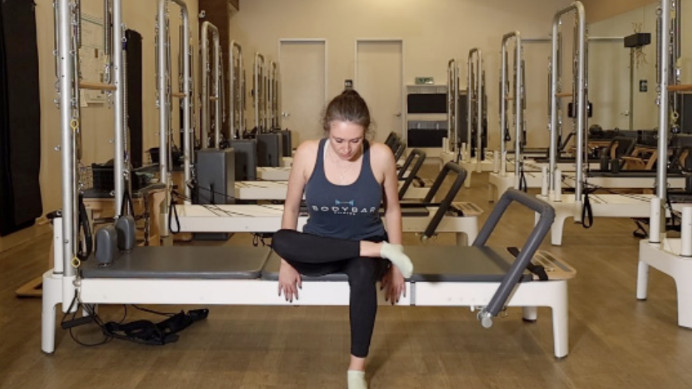
Time: 60sec each side
What it does: A static stretch that lengthens the piriformis, which can often get tight if you spend a lot of time sitting.
How to do it:
- Sit on a chair with your feet flat on the floor.
- Place your right ankle on your left knee.
- Engage your core, and keeping your back flat, hinge forward from the hips to feel a stretch in your right glute.
- Hold this stretch for time, then repeat on the other side.
5. Runner’s lunge

Time: 60sec
What it does: Stretches and lengthens the hip flexors while engaging the core and upper body.
How to do it:
- Get on your hands and knees, step your right foot to the outside of your right hand, and move your left foot back.
- Sink your hips toward the floor and hold for a few breaths.
- Repeat on the other side.
- Continue alternating sides for time.
6. Swan stretch

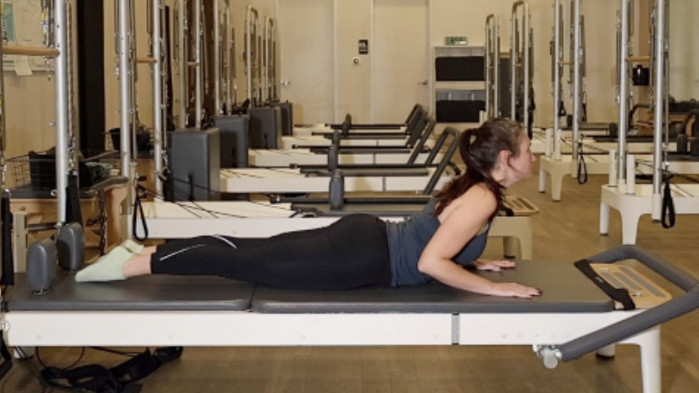
Time: 60sec
What it does: This stretch lengthens the front of the body, including the chest, abdominals and hip flexors.
How to do it:
- Lie face down with your hands on the floor under your shoulders and your legs extended.
- Press your hands into the mat and lift your chest.
- Activate your glutes and lengthen through your spine, drawing your shoulders down and back.
- Hold for a few breaths.
- Lower your chest with control and repeat.
7. Child’s pose side reach
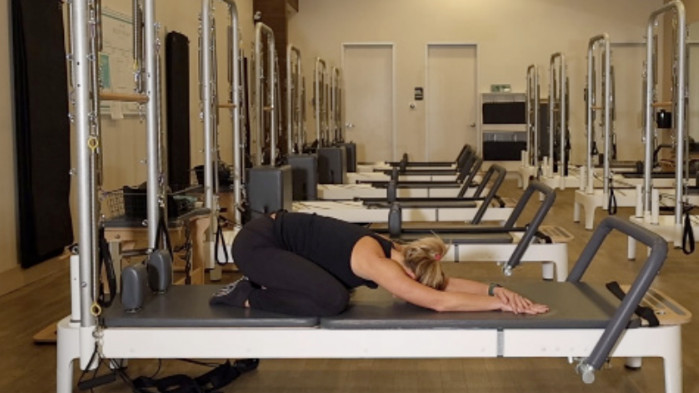
Time: 30sec each side
What it does: This feels great and stretches the glutes, back, shoulders, chest and side body at once.
How to do it:
- Get on your hands and knees, then move your hips back to your heels
- Reach your arms forward and let your chest sink.
- Place your right hand on top of the left to stretch the right side of your body.
- Hold for 30 seconds then repeat on the other side.
8. Upper-body flow
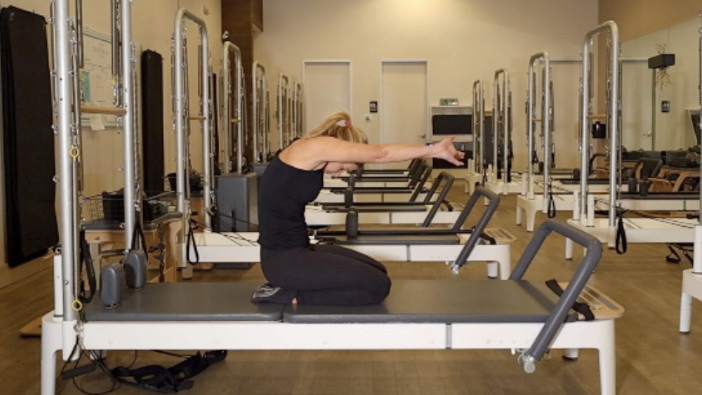
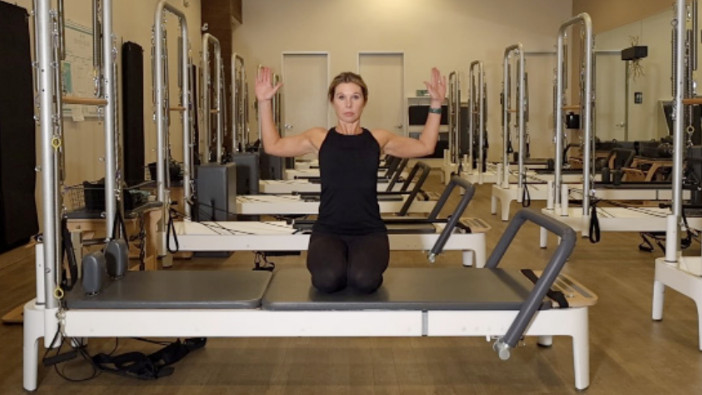
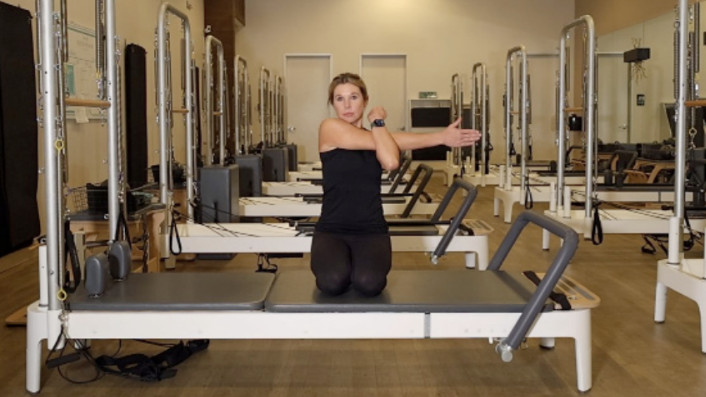
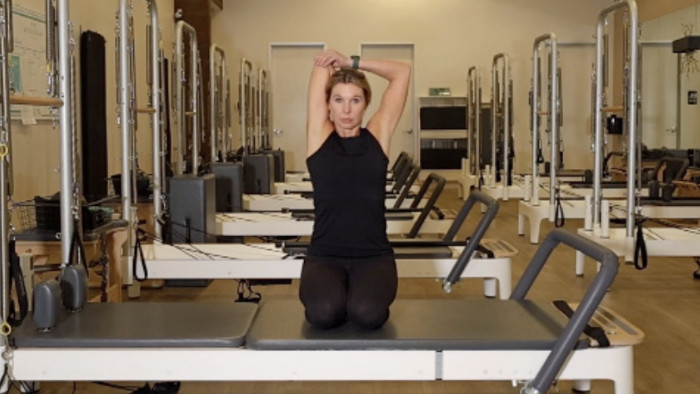
Sets: 2 Time: 15-30sec (each side, where appropriate).
What it does: A great finisher to your mobility session. Flow from one stretch to the next to get a dynamic effect.
How to do it:
- Upper-back stretch: Kneel on the floor and reach your hands forward, tuck your chin and curl the top of your spine.
- Chest stretch: Kneel on the floor, lift your arms out to the side and bend your elbows to 90° so your fingers point up. Gently pull your elbows back.
- Shoulder stretch: Reach your right arm to the left across your body, place your left elbow under your right elbow and use your left forearm to gently pull your right arm into your chest. Repeat on the other side.
- Triceps stretch: Raise your right arm and bend your elbow so your right hand is behind your head. Use your left hand to gently pull your elbow back.

Lou Mudge is a Health Writer at Future Plc, working across Fit&Well and Coach. She previously worked for Live Science, and regularly writes for Space.com and Pet's Radar. Based in Bath, UK, she has a passion for food, nutrition and health and is eager to demystify diet culture in order to make health and fitness accessible to everybody.
Multiple diagnoses in her early twenties sparked an interest in the gut-brain axis and the impact that diet and exercise can have on both physical and mental health. She was put on the FODMAP elimination diet during this time and learned to adapt recipes to fit these parameters, while retaining core flavors and textures, and now enjoys cooking for gut health.
